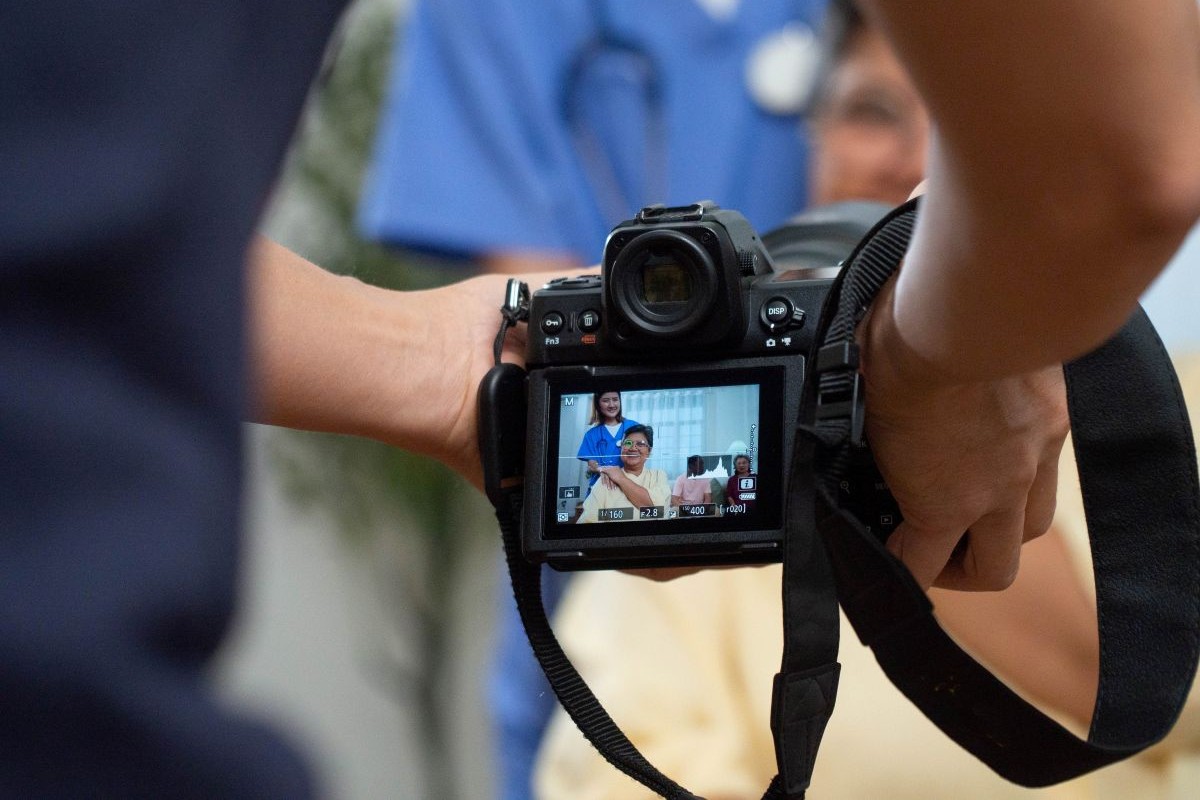
Demonstrating Procedures with Health and Safety Videos
When it comes to teaching a process or standardising tasks, businesses are turning more often to video. Step-by-step demonstration videos are now common across sectors, from onboarding and technical training to compliance and maintenance routines. Among the most important applications are health and safety videos, which continue to prove their value by helping reduce incidents and maintain safe work environments. Procedure demonstration videos are not about entertainment or reaching marketing goals. Their job is simple: show how something is done, clearly and consistently. Whether that means walking through machine shutdown protocols, showing how to assemble lab equipment, or guiding staff through site induction procedures, these videos offer a reliable format for practical training. Let’s take a look at how procedure demonstration videos can help businesses improve training, compliance, and overall operational efficiency.
Why Businesses Are Focusing on Procedure Demonstration Videos
People do not learn the same way. Reading a manual might work for some, but most employees benefit from seeing a task performed. Videos provide that clarity. They show what needs to be done, how to do it, and often, what not to do.
In regulated environments, this matters. Health and safety videos—a type of procedure demonstration—are particularly important in sectors like manufacturing, logistics, healthcare, and construction. These videos help ensure that workers understand safety protocols before they even set foot on site.
Consistency is another reason businesses rely on video. One video means one version of the message. No drift, no variation between instructors, no lost meaning over time.
The Role of Instructional Design in Procedure Videos
Good teaching does not happen by accident. Procedure videos benefit when built on proven learning frameworks. Two stand out:
ADDIE Model
This five-phase model is widely used in training content development:
- Analyse: What does the audience need to learn?
- Design: What steps must be shown and in what order?
- Develop: How should visuals, narration, and supporting graphics be created?
- Implement: How will the video be delivered—on-site, online, or both?
- Evaluate: Are viewers actually learning what they are supposed to?
This structure brings order to content creation and helps keep procedure videos focused. It also supports regular updates—vital for health and safety videos, which often need reviewing after policy changes or incidents.
Bloom’s Taxonomy
Originally developed for educators, Bloom’s Taxonomy is useful for video too. It encourages moving beyond “just showing” a task. Depending on the complexity, a video might ask viewers to not only perform the steps but also understand the reasons behind them, spot potential problems, or even suggest improvements.
For example, a basic health and safety video might demonstrate how to lift objects safely. A more advanced one could include a scenario where staff choose the correct response to a workplace hazard, encouraging deeper understanding.
Production Practices That Keep Viewers Focused
Not every video needs cinematic flair. For procedure demonstrations, the focus should stay on clarity. That means:
- Clean visuals: Good lighting, steady shots, and appropriate framing are essential. Viewers need to see what is being done without distraction.
- Clear audio: Muffled instructions or echoing rooms are frustrating. Good sound keeps attention where it should be—on the information.
- Well-structured narration: Voiceover that matches the pace of the task helps viewers stay on track. It should be informative, neutral, and avoid unnecessary filler.
In health and safety videos, these principles are especially important. Missed details or misunderstood instructions can lead to confusion or worse—accidents. Highlighting key steps with text overlays or simple diagrams can help reinforce understanding.
Making Videos More Than Just Passive Viewing
Watching is good. Doing is better. Interactive elements can help move procedure videos from one-way demonstrations to active training tools.
- Branching scenarios: These let viewers choose how to respond in different situations. For example, a video might show an electrical fault and ask the viewer to select the next step.
- Quizzes and checkpoints: These test whether the viewer understood the process. Even simple multiple-choice questions can help with recall.
- 360° views and overlays: These are useful when showing environments that are large, complex, or hard to access. In health and safety videos, this might include walking through an emergency exit route or exploring confined spaces.
These additions do not just improve engagement; they help ensure that viewers can apply what they have seen.
Post-Production That Supports the Message
After the cameras stop rolling, the work continues. Editing is where the content becomes truly useful.
- Trim the excess: Unnecessary shots, awkward pauses, or redundant explanations should be removed.
- Add supporting visuals: Simple graphics can clarify procedures. For health and safety videos, this might mean highlighting risk zones or labelling hazardous materials.
- Check for accessibility: Subtitles, audio descriptions, and translated versions can extend the video’s reach. They also make it more inclusive for multilingual teams or staff with hearing impairments.
Good editing is invisible. It keeps the video moving, holds attention, and lets the process speak for itself.
Where These Videos Are Used (And Why That Matters)
Procedure demonstration videos are not tied to one industry. They are used wherever consistency and accuracy matter.
- Healthcare: Demonstrating equipment sterilisation, sample handling, or safety checks before procedures.
- Construction: Showing how to safely operate equipment or follow site-specific safety briefings.
- Warehousing and logistics: Training on manual handling, forklift use, or hazardous material storage.
In every case, health and safety videos form a backbone of staff education. They are often required by law, but even when optional, they make good sense. A video that prevents one injury has already paid for itself.
Trends Shaping the Next Generation of Procedure Videos
Technology continues to influence how videos are made and used. Some current shifts include:
- Artificial intelligence: Used to automate subtitles, translations, or even analyse viewer engagement.
- 3D visualisation: Especially useful for machinery or internal systems that cannot be filmed directly.
- Cloud-based updates: Allow for rapid deployment of new procedures or changes to existing ones, ideal for time-sensitive health and safety videos.
These updates make it easier to keep training materials accurate and responsive to real-world needs.
Conclusion: Why These Videos Matter
Procedure demonstration videos may not be the flashiest thing on a company’s to-do list, but they are often among the most useful. When done properly, they do not just explain—they guide, reinforce, and help standardise the way things get done. From onboarding a new warehouse team to updating lab protocols, they provide structure in places where clarity matters most.
That is especially true for health and safety videos, where a missed step is not just inconvenient—it can have real consequences. These videos support not just compliance, but confidence. Staff know what to do, when to do it, and what to expect. The result? Fewer questions, fewer mistakes, and far fewer sighs in front of outdated laminated posters.
In the end, the strength of a procedure video is not in its production value alone, but in its ability to make instructions feel accessible without watering them down. It is about taking a task, however dull or complex, and turning it into something that makes sense the first time around. No fuss, no fluff—just steps that work.
Good instructions make great habits. At Sound Idea Digital, we produce health and safety videos that help teams stay consistent, confident, and informed. If there is a process that needs to be shown, we are ready to help you show it. Get in touch with us to discuss your next video project.
We are a full-service Web Development and Content Production Agency in Gauteng specialising in Video Production, Animation, eLearning Content Development, Learning Management Systems, and Content Production.
Contact us for a quote. | enquiries@soundidea.co.za | https://www.soundideavideoproduction.co.za| +27 82 491 5824 |

